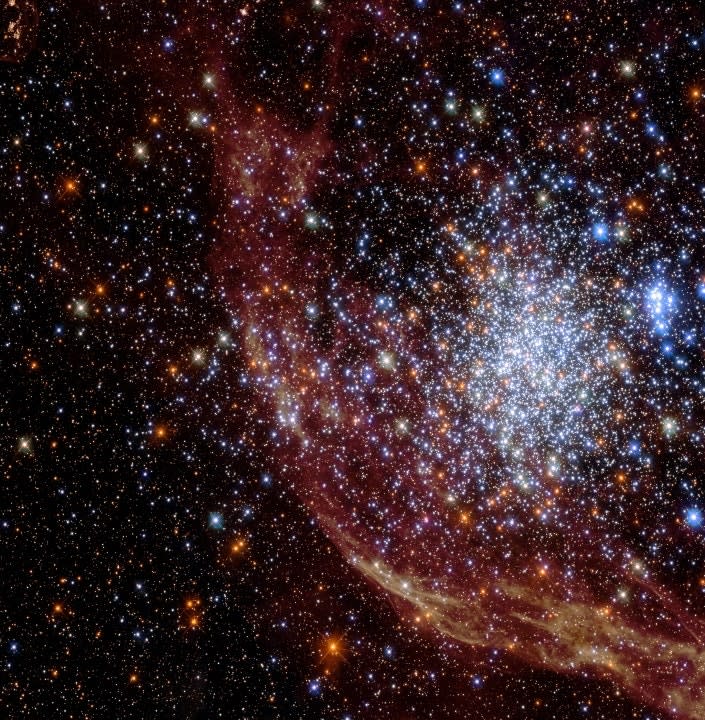NASA’s Hubble Space Telescope snapped a pair of “dazzlingly different” images of a brilliant star cluster some 160,000 light years away.
Globular cluster NGC 1850, in the constellation Dorado, is approximately 63,000 times the mass of the sun, is 100 million years old and is located in the Large Magellanic Cloud, NASA said in a news release.
A birthplace for billions of stars, the Large Magellanic Cloud is a satellite galaxy of the Milky Way.
The agency said that the telescope used filters with specific assigned colors to study particular wavelengths of light emanating from NGC 1850 and its surrounding stars.
NASA’S MARS ROVER DEPOSITS FIRST SAMPLE ON RED PLANET FOR POSSIBLE RETURN TO EARTH
One image with blue nebulosity includes near-infrared light as well as visible light, while the other with red nebulosity covers the near-ultraviolet to the beginnings of the infrared spectrum.
READ ON THE FOX NEWS APP
NGC 1850 is a spherical collection of densely packed stars held together by mutual gravitational attraction, the release said.
However, unlike most globular clusters, its stars are relatively young.

According to scientists, the theory is that the first generation of stars in the globular cluster ejected matter into the surrounding cosmos when they were born.
IMAGE FROM NASA’S WEBB TELESCOPE REVEALS EARLY STELLAR FORMATION IN ‘RARE’ FIND
However, the density of the cluster was so high that the matter could not escape its gravitational pull, causing it to stay nearby, and the gravity of the cluster also pulled in hydrogen and helium gas from its surroundings.

The sources of gas created a second generation of stars, increasing both the density and size of the globular cluster.
The presence of a black hole was found in NGC 1850 and there are also around 200 red giants and many brighter blue stars.
CLICK HERE TO GET THE FOX NEWS APP
Surrounding the cluster is a pattern of nebulosity, diffuse dust and gas theorized to come from supernova blasts.